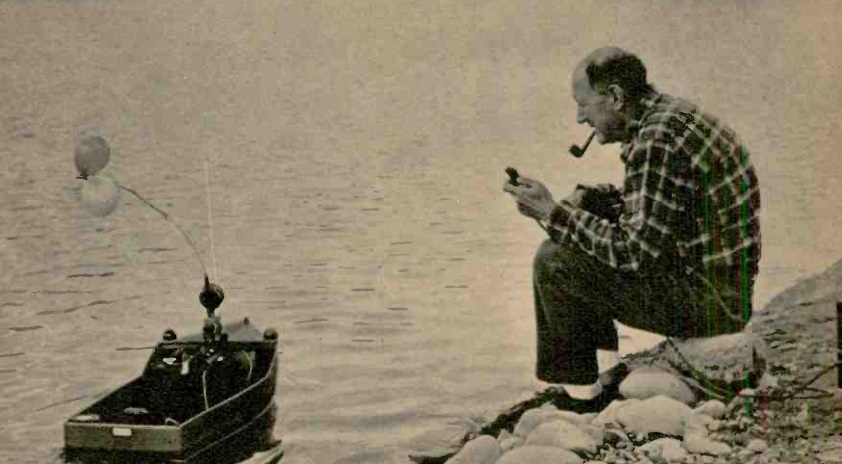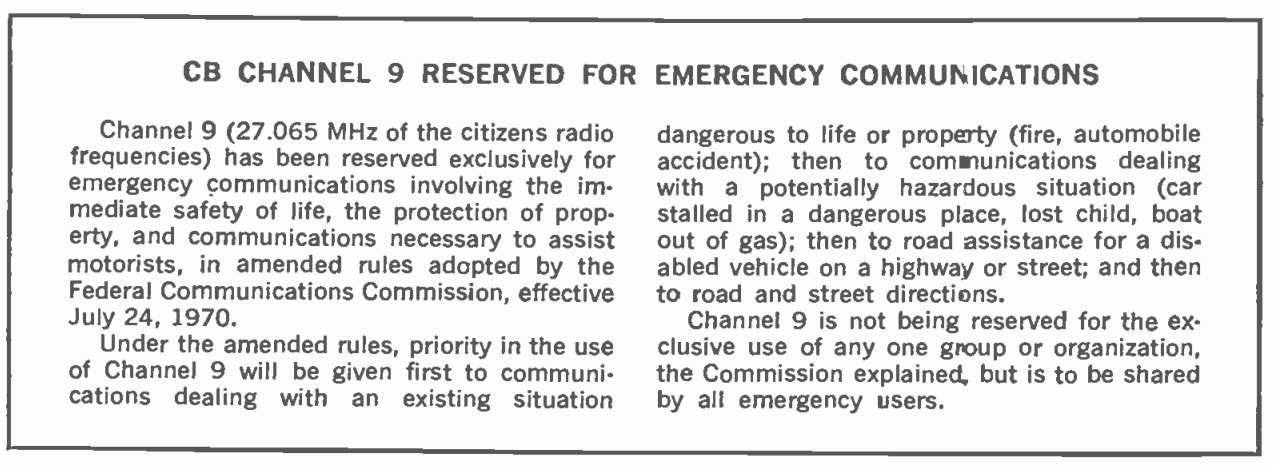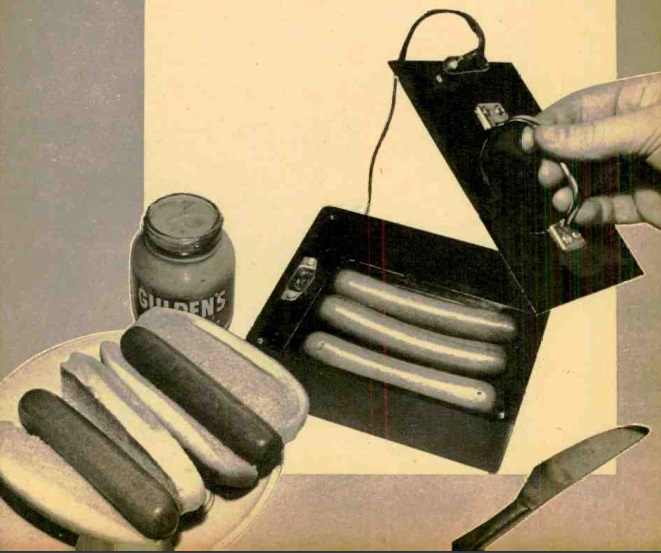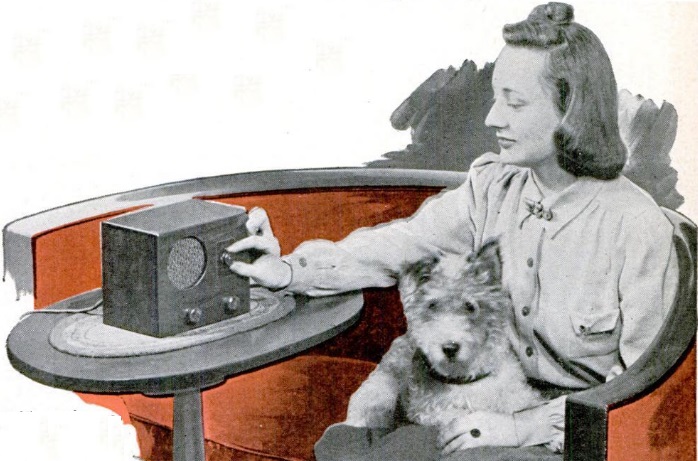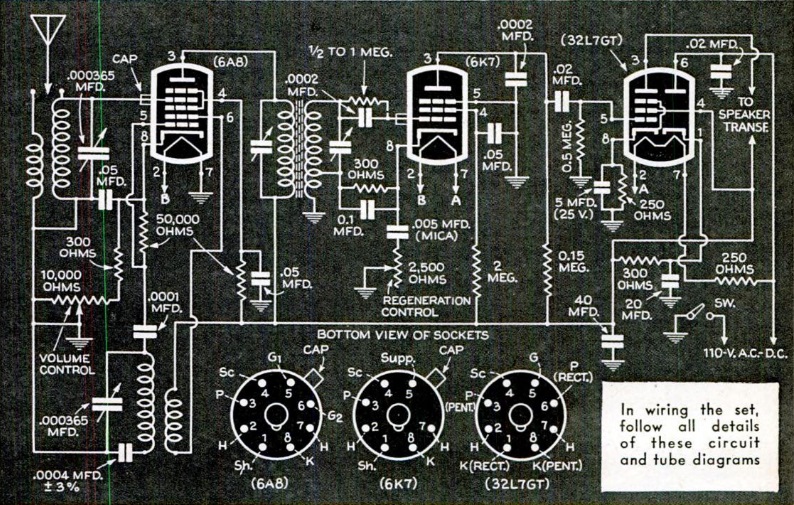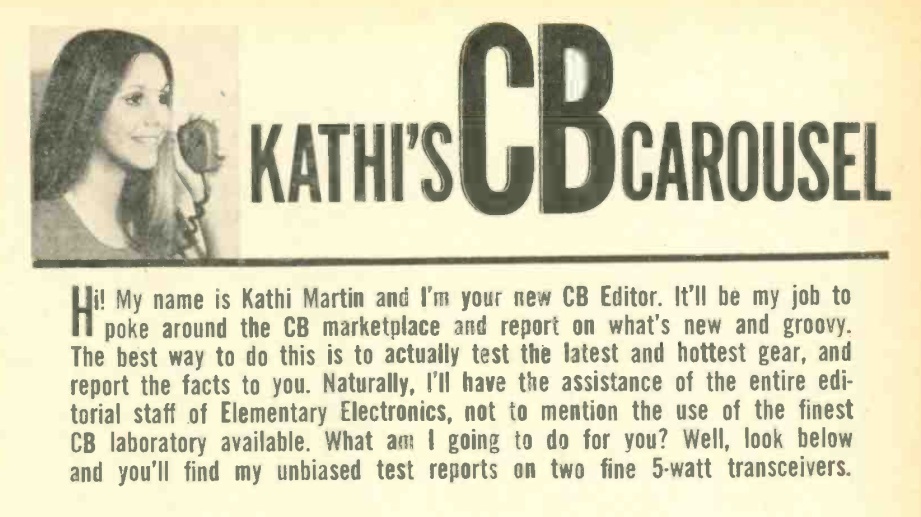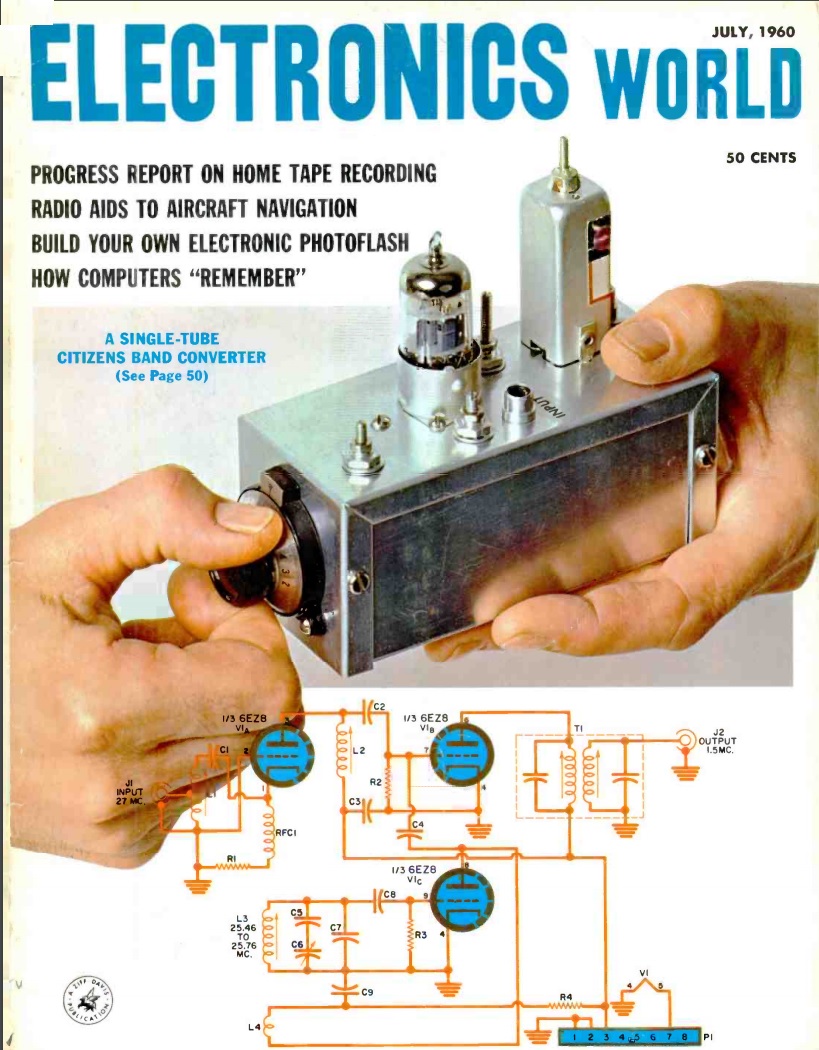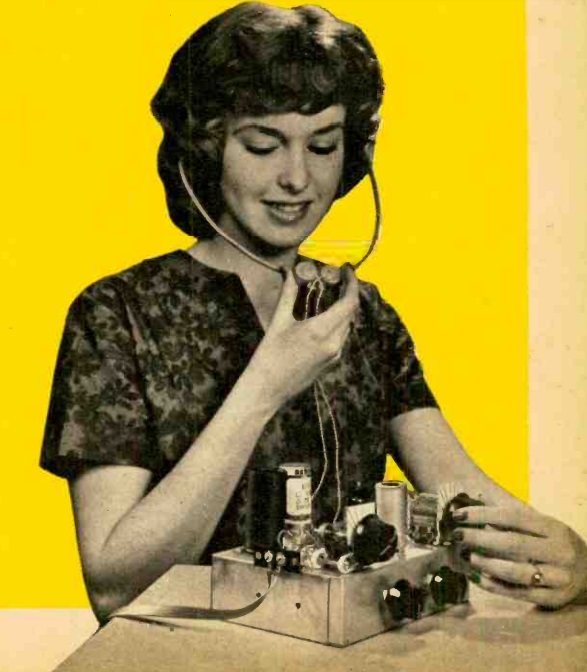 This listener was undoubtedly the first on her block to tune in a stereophonic broadcast, thanks to the two-tube AM-FM stereo receiver shown in the July 1960 issue of Electronics Illustrated.
This listener was undoubtedly the first on her block to tune in a stereophonic broadcast, thanks to the two-tube AM-FM stereo receiver shown in the July 1960 issue of Electronics Illustrated.
That’s right, With only two tubes, this radio pulls in AM-FM stereo broadcasts. If you wondering how that’s even possible, read carefully. It doesn’t receive FM stereo broadcasts. In fact, the FCC didn’t even adopt a standard for FM stereo until 1961. Just like I said, it receives AM-FM stereo broadcasts: An AM station is transmitting the left channel, the right channel of the program is being transmitted on FM. The set is actually two separate two-tube receivers. It uses a dual triode 12AT7, one half as a regenerative AM detector, and the other half as a superregenerative FM detector. The set contains two audio amplifiers, each using half of a 12AX7. A DPDT switch on the stereo headphones allows the listener to select AM, FM, or AM-FM stereo.
The author concedes that the set is basically experimental, and not high fidelity. But he added that the set gave remarkable qualities of depth and direction to the sound. By tweaking the coils a bit, the FM side could also be used to listen to TV audio when stereo broadcasts weren’t on the air. The magazine noted that stereo broadcasts would be listed in the newspaper, and were available in many cities.
 In addition to being the first on her block to have a stereo receiver, this woman could very well have been one of the few on her block to have an FM receiver of any kind. They were starting to show up by 1960, especially in higher-end console radios for the home. AM-FM portables were available, but as this issue of the magazine also shows, they were very expensive. This Zenith AM-FM portable, the Royal 2000, gives every indication of being a top performer. But it also sold for the princely sum of $189.95.
In addition to being the first on her block to have a stereo receiver, this woman could very well have been one of the few on her block to have an FM receiver of any kind. They were starting to show up by 1960, especially in higher-end console radios for the home. AM-FM portables were available, but as this issue of the magazine also shows, they were very expensive. This Zenith AM-FM portable, the Royal 2000, gives every indication of being a top performer. But it also sold for the princely sum of $189.95.
A minimum wage worker earning a dollar an hour would have to work for more than a month to afford this radio, and still wouldn’t have enough money to buy the eight D cells. Putting together your own AM-FM stereo doesn’t sound like that bad a deal.
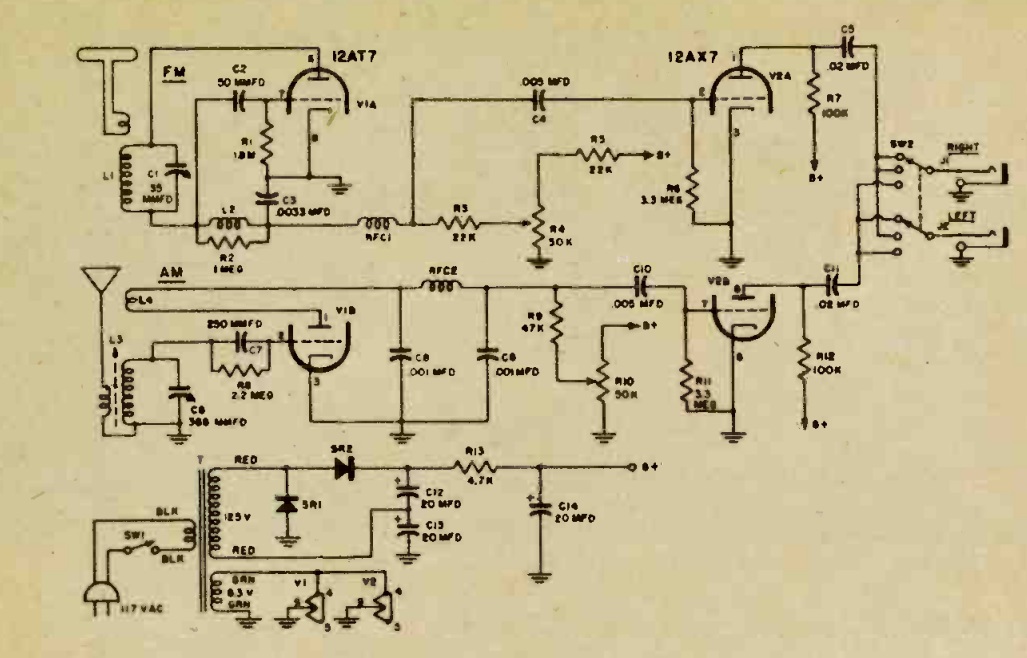
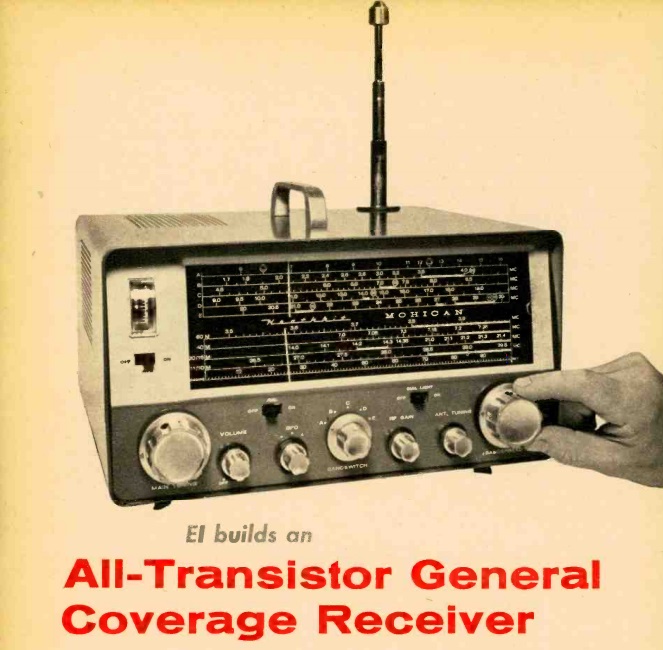 Seventy-five years ago this month, the July 1960 issue of Electronics Illustrated reviewed the then-new Mohican shortwave receiver from Heathkit. The reviewer reported that the assembled the $100 receiver in about 40 hours, and the result was an astonishingly “hot” 10-transistor superheterodyne that covered 560 kHz to 30 MHz (with apologies, apparently, to the stations at the very bottom of the broadcast dial).
Seventy-five years ago this month, the July 1960 issue of Electronics Illustrated reviewed the then-new Mohican shortwave receiver from Heathkit. The reviewer reported that the assembled the $100 receiver in about 40 hours, and the result was an astonishingly “hot” 10-transistor superheterodyne that covered 560 kHz to 30 MHz (with apologies, apparently, to the stations at the very bottom of the broadcast dial).
